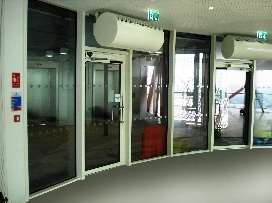
The Importance of Fire Compartmentation
Whatever the building, compartmentation is fundamental to its safety, creating a series of protected fire zones to ensure that the fire is contained.
- By Jane Embury
- Sep 25, 2014
First, some statistics.
There were 140 fire deaths in England between April and September last year, a 33 percent reduction on the same period ten years ago.
In the same six months, fire and rescue services attended 102,000 fires, 55percent lower than 2002. They also attended 115,000 false alarms.
In total, there was a UK reduction in reported fires of 69.5 percent between 1979 and 2007, although the cost of fire remains high. The Association of British Insurers estimated that in the first half of 2009, insurers paid out £639 million for fire damage - £3.6 million a day.
On a worldwide scale, international fire statistics are collated by the World Fire Statistics Centre (WFSC), which estimates that costs due to fire add up to approximately 1 percent of global GDP – that’s €126 billion in Europe alone.
In the industrialized world, fire deaths per 100,000 of population range from 0.02 in Singapore to 2.03 in Finland. The UK stands at 0.75.
Across the EU, fire killed over 4,000 people in 2010. In 2011, in India, fire killed over 26,000 people.
In other words, fire remains a potent threat, despite advances in building design and construction and the enforcement of strict building regulations.
Essentially, fire safety in commercial buildings is down to three things: an alarm system to detect and warn of the danger; a sprinkler system to damp down the fire; and fireproof compartments to contain the fire at source and prevent it spreading.
Taken together, those active and passive elements are designed to allow occupants to escape from the building, and provide safe access for the fire and rescue services. How those elements are applied depends on the size of the building, its complexity and its function.
For example, an evacuation plan for a hospital or care home will be different to that of an office block, and require a different building safety approach. In other words, building safety addresses the mobility, or otherwise, of its likely occupants.
Whatever the building, compartmentation is fundamental to its safety, creating a series of protected fire zones to ensure that the fire is contained. For the glazed elements, the UK’s Glass and Glazing Federation has a specific guide on fire-resistant glazing.
Fire is spread through three methods: convection, conduction and radiation, of which convection is the most dangerous. This is when smoke from the fire becomes trapped by the roof, spreading in all directions to form a deepening layer. Smoke, rather than fire, is often the real danger. Materials such as metal can absorb heat and transmit it to other rooms by conduction, where it can cause new fires to break out. Radiation transfers heat in the air, until it too sets off secondary fires, spreading the danger away from its original location.
Modern glazing systems can provide complete protection against convection, conduction and radiation – whether as curtain walling, or internal doors or fire screens – for up to two hours, giving more than enough time for a safe evacuation.
But building designers and specifiers must ensure that the glass and its framing systems have proven compatibility. That means insisting on comprehensive fire test certification that covers both elements.
In a fire, the glass and its frame have to function together to prevent the spread of fire, smoke or toxic gases. If one fails, both fail, with potentially catastrophic consequences.
 At Wrightstyle, we’ve invested in fire certification in the UK, USA and Far East – a reflection of our global business, and our confidence in our systems’ performance.
At Wrightstyle, we’ve invested in fire certification in the UK, USA and Far East – a reflection of our global business, and our confidence in our systems’ performance.
We can also handle each step – from designing bespoke solutions, to fabrication and installation: an end-to-end service with comprehensive guarantees at each stage.
We can’t prevent fire from happening. But we can prevent it from spreading, and that’s just as important.
About the Author
Jane Embury has been with Wrightstyle since the company’s formation in 1996. She is now a director of the company responsible for both the marketing and finance departments. She has some 17 years of experience in all aspects of the steel glazing sector and has overseen Wrightstyle’s growth as an international supplier of specialist glazing systems to mitigate against fire, high wind loading, and ballistic or explosive attack. Prior to joining Wrightstyle, Jane worked in the City of London in export finance.